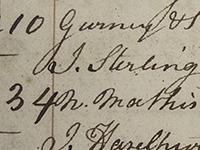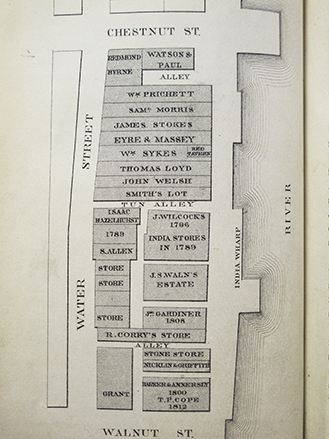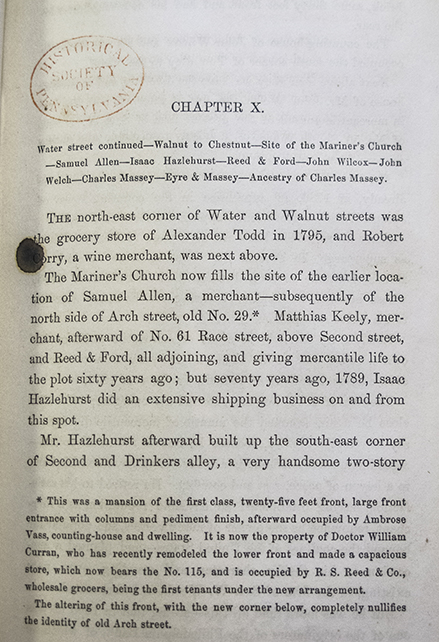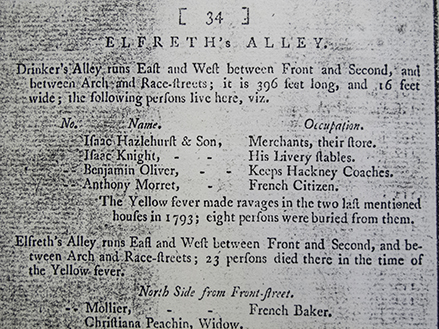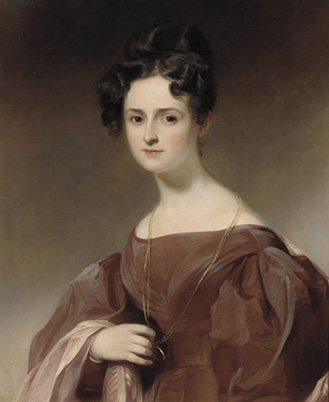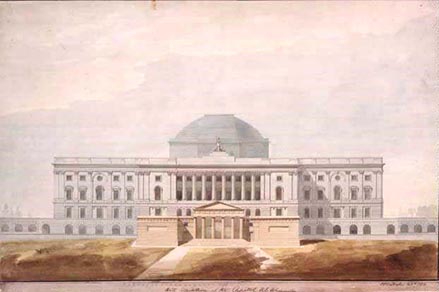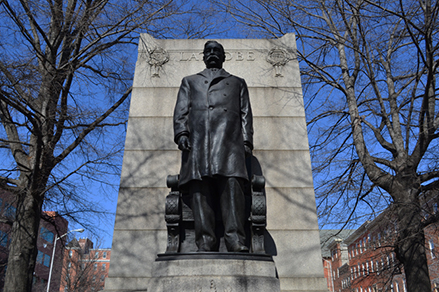As a conservation technician on the Bank of North America project, I am constantly amazed and inspired by the collection. Indeed, it is inevitable that as I clean and mend pages in the manuscripts, my interest is piqued by what I find within – whether it be ink blots, insects, doodles, or in this case, certain recurring names. The names I find particularly eye-catching are those that speak of bygone eras, names that I have not previously encountered in contemporary society, names that inspire narrative imaginings like fictional characters in a favorite novel.
One such name went a step above casual pondering to elicit genuine curiosity. That name was Isaac Hazlehurst. I began to find his name so often in the ledgers on which I was working, that I felt sure he must have been a prominent Philadelphian of his age… and yet his was not a name with which I was familiar, like George Latimer, Stephen Girard, or Henry Drinker. I knew that I must pose this question: who was this Isaac Hazlehurst, exactly, and what was he doing in Philadelphia at the end of the 18th century?
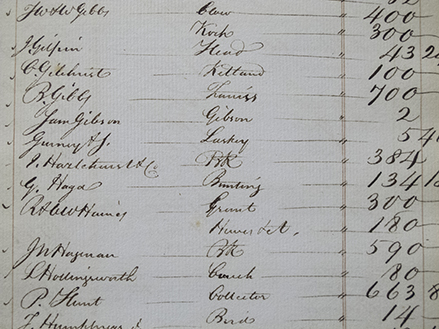
The Bank of North America Collection, Volume 358: Cash book 1790 January 13 - April 15
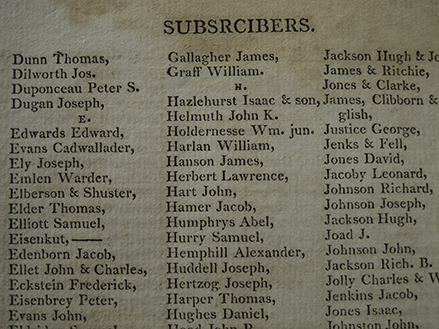
The Bank of North America Collection, Vol. 664: Rowlett's Tables, 1802.
Surprisingly enough, this was my first foray into research of a genealogical nature at the Historical Society. I knew that I should begin with a conversation with our resident historian, Dr. Dan Rolph, as he could most assuredly direct me on my way. I was simply unprepared for the amazing wealth of information we amassed about Isaac in the span of one hour – details about his birth, death, marriage, and children, which began to paint a picture of this man, the life that he led, and the lives of his family. When we found a record of a letter from Alexander Hamilton to Isaac Hazlehurst on Founder's Online (part of the National Archives), I knew that my hunch that Isaac was a prominent figure in Philadelphia was correct. As I continued my research on my own in the weeks following, I was stunned that the investigation into a name with which I felt an affinity could reveal such a gold mine of Philadelphia and mid-Atlantic history.
Isaac Hazlehurst, Jr. (it turns out!) was born on November 22, 1742 in Manchester, England, the son of Isaac Hazlehurst and Mary Gryme. He was a prominent lawyer and merchant, establishing the Hazlehurst mercantile firm in Philadelphia in 1768. He wed Julianna Purviance on April 25, 1769 here in Philadelphia, and together they had seven children: Mary Elizabeth, Andrew, Samuel, Robert, John, Richard Hunter, and Isaac III. The following images show records for two locations for the Hazlehurst mercantile firm. The first was located at the now non-existent corner of Water St. and Tun Alley, approximately where Columbus Blvd now stands, parallel to I-95. The second Hazlehurst house and store was located on Drinker’s Alley, parallel to and in the same city block as our beautiful Elfreth’s Alley. In my optimistic imaginings I pictured myself visiting this house, but sadly, the entirety of Drinker’s Alley has also vanished. Instead of the history of these streets being preserved and cherished, they were leveled in the name of progress.
Philadelphia and her merchants by Abraham Ritter
Philadelphia and her merchants by Abraham Ritter
Philadelphia Directory, 1795, 1796 by George Alberti, M.D.
After this disappointment, I was thrilled to stumble upon the name Isaac Hazlehurst in a list of portraits by famous American portraitist Thomas Sully. Even more amazing to learn was that this painting is actually contained in the collection of the Pennsylvania Academy of Fine Arts here in Philadelphia! However, the date on the painting indicates that it must be Isaac Jr.’s son, Isaac III, who is immortalized in the painting. There is also one of Mary Elizabeth, our Isaac’s eldest child.
Thomas Sully, Isaac Hazlehurst, 1838. Oil on canvas.
Thomas Sully, Mary Hazlehurst, 1831. Oil on canvas.
Isaac’s daughter Mary ended up marrying Benjamin Henry Latrobe, who has been called “The Father of American Architecture”. Latrobe is noteworthy for his designs of the sadly now demolished Bank of Pennsylvania and the Center Square Water Works, once found at the location of Philadelphia’s City Hall. Latrobe also contributed designs for our Capital in D.C. As if this is not incredible enough, it is Mary Hazlehurst and Latrobe’s grandson (and Isaac Jr.’s great grandson), who was Mayor of Baltimore seven times over: Ferdinand Claiborne Latrobe.
The Bank of Pennsylvania. Architect: Benjamin Henry Latrobe. Artist: Benjamin Ridgway Evans, 1855.
Benjamin Henry Latrobe, United States Capitol, Rendered Elevation for West Front with Propylaeum, 1811.
Ferdinand Claiborne Latrobe Monument in Baltimore, designed by Edward Berge and J. Maxwell Miller.
In addition, we in the conservation department made another exciting connection, one that is close to our hearts here at HSP. In 2011, HSP produced and published a facsimile of Ellen Emlen’s Cookbook written in her own hand. On page 124 of this cookbook can be found a recipe for Mrs. Hazlehurst’s Brandied Peaches! With no first name mentioned, the recipe could be sourced from any number of Mrs. Hazlehursts, but it is Samuel, Isaac’s third child, who married Elizabeth Baynton Markoe. This Elizabeth may have been a relation of Ellen Emlen, who was also a Markoe; because of this connection, it is our working theory that Elizabeth Hazlehurst, Samuel’s wife, may well be the Mrs. Hazlehurst responsible for these brandied peaches.
As I continue my research, it is my hope to visit some of the locations I have learned about with which Isaac held a connection. If you know anything about the Hazlehurst or Latrobe families, or have advice on how I may continue my research, please feel free to share!
In conclusion, I am truly awe-inspired by the revelations that have occurred simply through my curiosity of a name found within our collections. I cannot help but wonder about the other names I have glimpsed, the wealth of historic narrative attributed to each, and the connections waiting to be discovered.
Author's note: For further information, follow the links buried throughout this post, both in the text and in the images.

